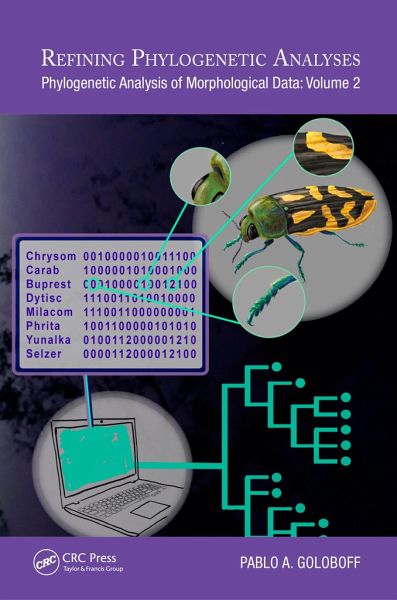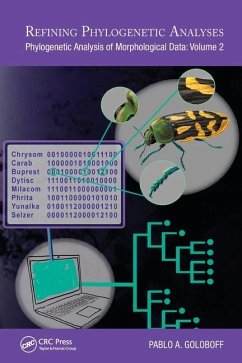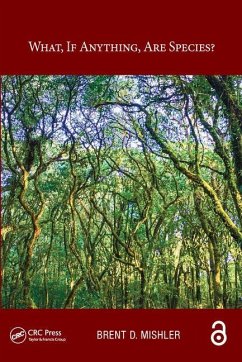
Refining Phylogenetic Analyses
Phylogenetic Analysis of Morphological Data: Volume 2
Versandkostenfrei!
Versandfertig in 6-10 Tagen
117,99 €
inkl. MwSt.
Weitere Ausgaben:

PAYBACK Punkte
59 °P sammeln!
This volume discusses the aspects of a phylogenetic analysis that go beyond basic calculation of most parsimonious trees. Practical application of all principles discussed is illustrated by reference to TNT, a freely available software package that can perform all the steps needed in a phylogenetic analysis. The first problem considered is how to summarize and compare multiple trees (including identification and handling wildcard taxa). Evaluation of the strength of support for groups, another critical component of any phylogenetic analysis, is given careful consideration. The different interp...
This volume discusses the aspects of a phylogenetic analysis that go beyond basic calculation of most parsimonious trees. Practical application of all principles discussed is illustrated by reference to TNT, a freely available software package that can perform all the steps needed in a phylogenetic analysis. The first problem considered is how to summarize and compare multiple trees (including identification and handling wildcard taxa). Evaluation of the strength of support for groups, another critical component of any phylogenetic analysis, is given careful consideration. The different interpretations of measures of support are discussed and connected with alternative implementations. The book reviews rationales for estimating character reliability on the basis of homoplasy, with particular attention to morphological characters. The main methods for character weighting and their practical implementation, several of them unique to TNT, are discussed ad libitum. Also unique toTNT is the ability to directly analyze morphometric data (including landmarks), on the same footing as discrete characters. Finally, the scripting language of TNT is introduced. With scripting, it is possible to "program" TNT to create personalized routines and automate complex calculations, taking analyses to the next level and allowing exploration of new methods and ideas.
Key Features
Discusses the treatment of ambiguity in phylogenetic analyses in depth, for summarizing results or comparing treesReviews literature on arguments and methods for weighting morphological characters and their practical applicationDescribes theory and application of methods for evaluating strength of group support, based on either resampling or comparisons with suboptimal treesDiscusses the use of morphometric characters in phylogenetic analysisPresents extensive information on commands and options of the TNT computer program, including the use and creation of scripts
Key Features
Discusses the treatment of ambiguity in phylogenetic analyses in depth, for summarizing results or comparing treesReviews literature on arguments and methods for weighting morphological characters and their practical applicationDescribes theory and application of methods for evaluating strength of group support, based on either resampling or comparisons with suboptimal treesDiscusses the use of morphometric characters in phylogenetic analysisPresents extensive information on commands and options of the TNT computer program, including the use and creation of scripts













